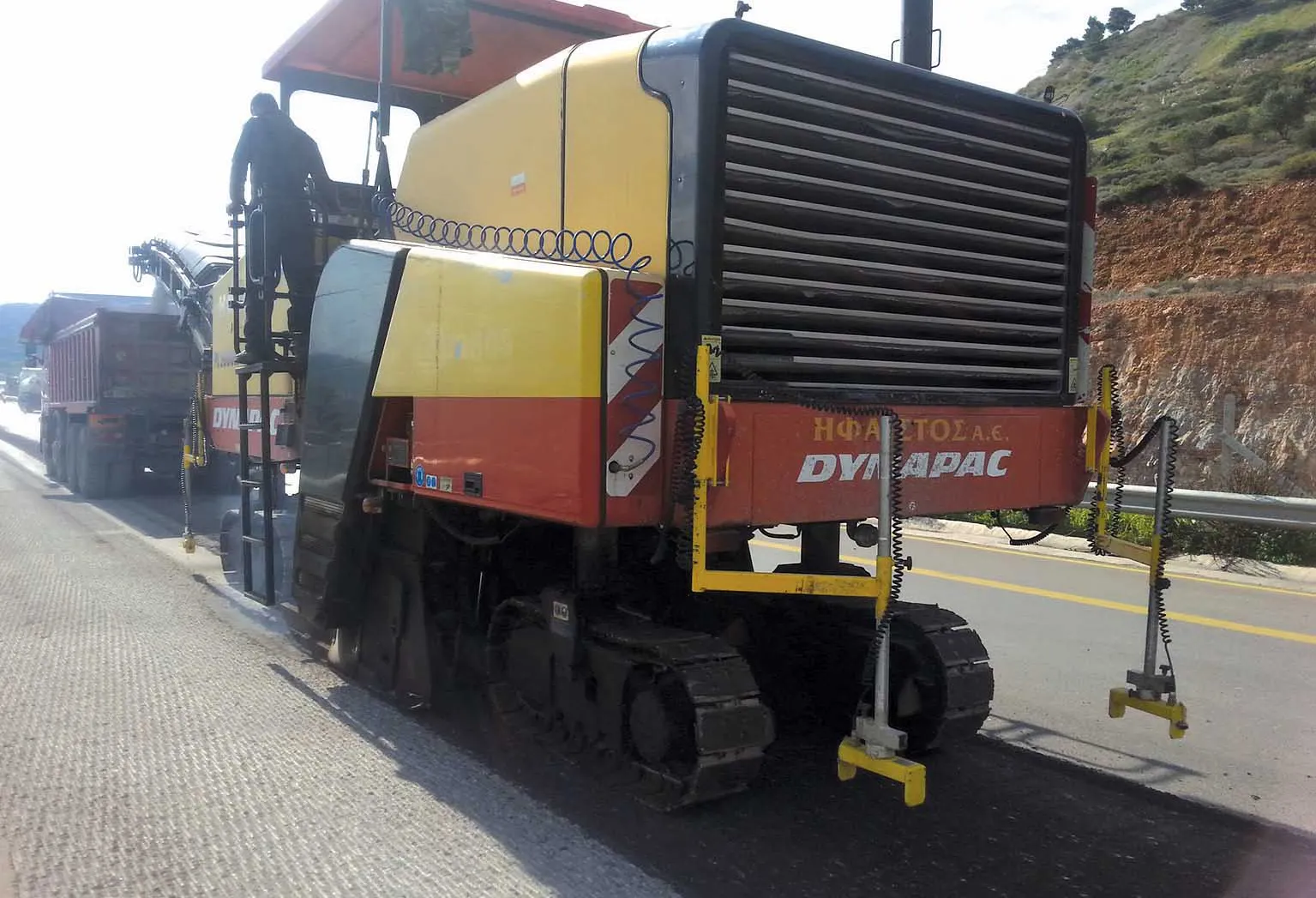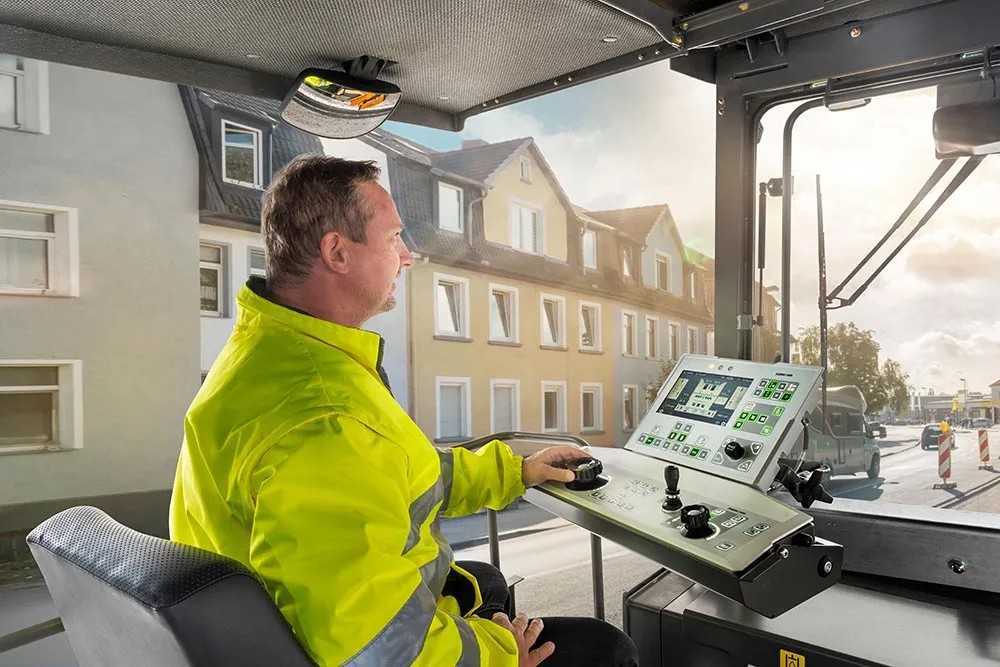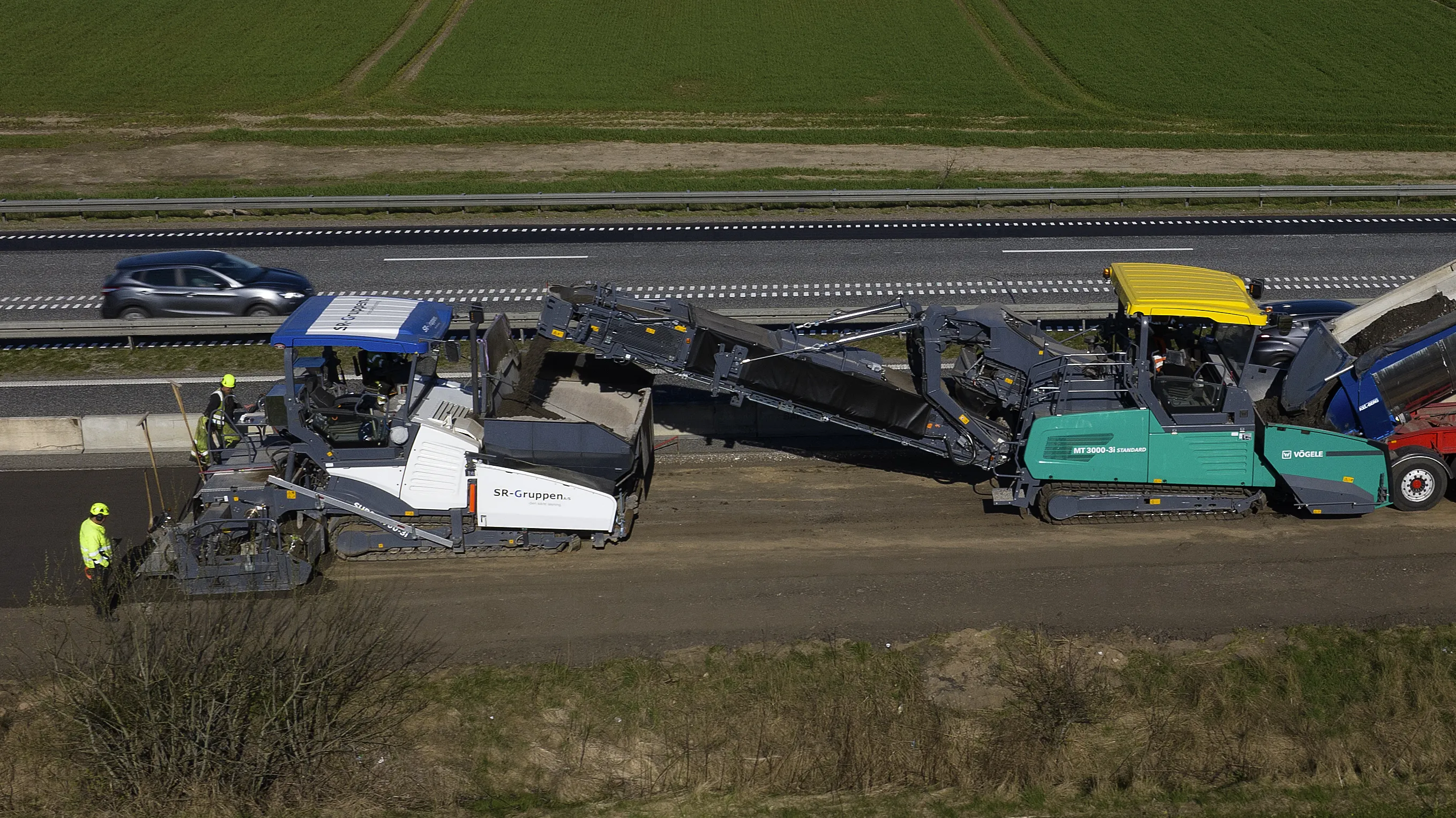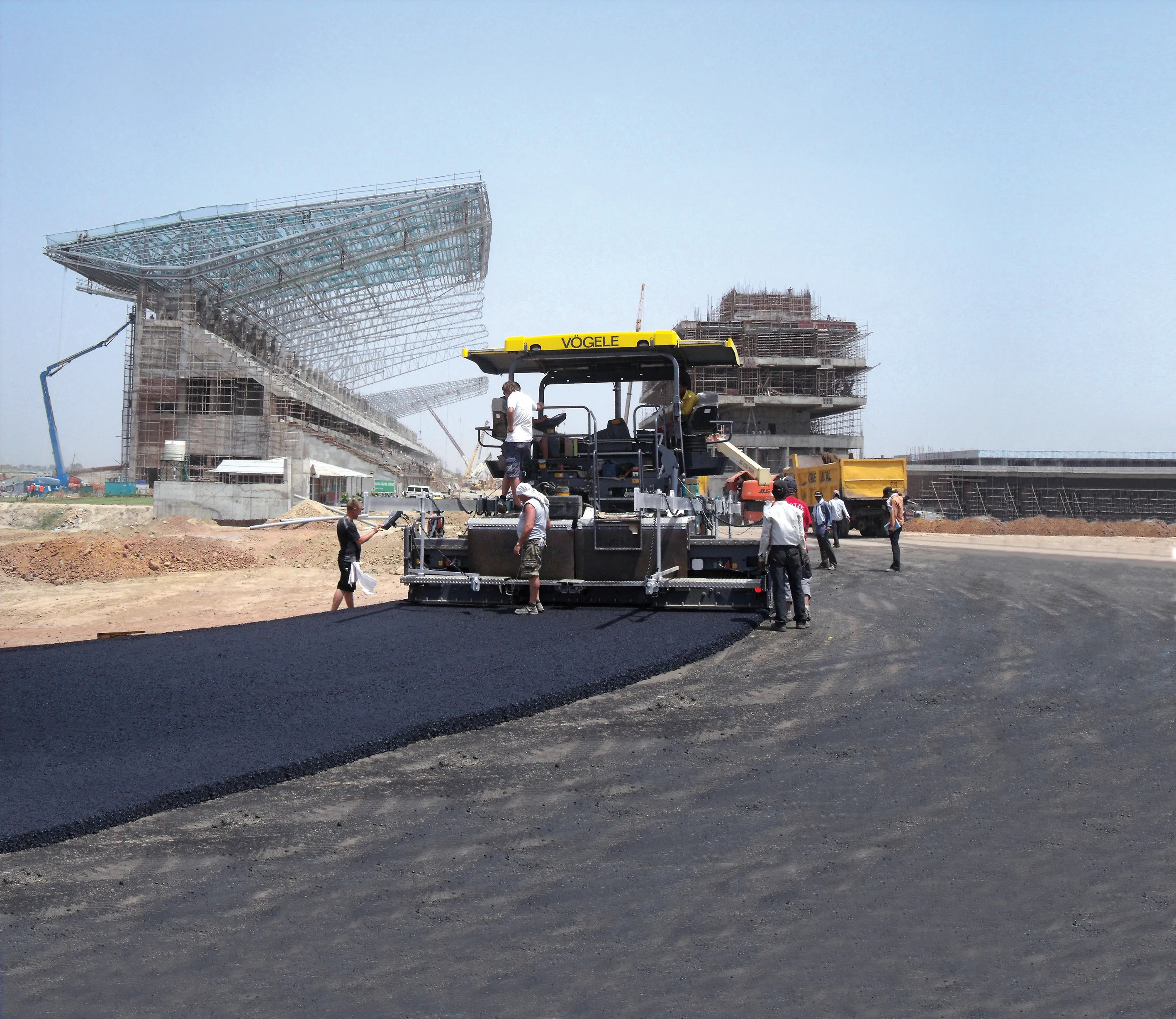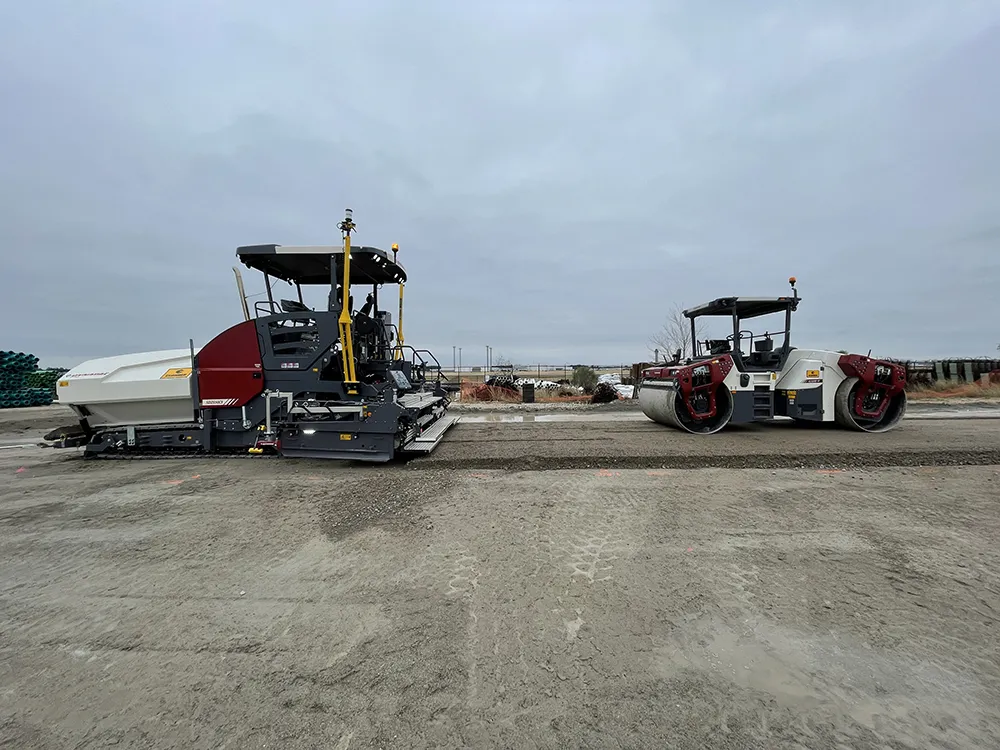
The project is being carried out by contractor Flatiron, together with rental firm and dealer Closner Equipment. The local dealer delivered an SD2550CS Dynapac paver fitted with a high compaction screed as well as two Dynapac rollers, a CC6200 VI and a CP2700. The paver was highly specified and fitted with technology including a Trimble 3D Leveling System, Dynapac´s MatTracker width assistant, a MOBA levelling tool and the MOBA Big Ski Plus.
All these systems are helping the customer to achieve high paving quality, which is crucial for an airport jobsite.
The customer had three key requests that the machine needed to deliver. The first was good grade control, which is crucial for airports, while the second was for maximum pre-compaction as this is vital for roller compacted concrete (RCC) surfaces due to the short time slots for material processing. The third was for a high level of automation so that the paving crew would be able to handle the process with at most three people around the paver. The combination of advanced levelling systems, the MatTracker and the TH E screed series delivered what was requested. The machine’s automatic functions made it easy to handle the material handling, while the screed delivered the maximum compaction possible for the material used. The combination of MOBA and Trimble levelling and the integration of both systems into the MOBA remote controls made it possible to switch between both systems easily during paving.
Dynapac, Closner and the Flatiron crew completed an extensive training week where they learned how to handle the machine, set the correct height and to use the integrated levelling automatic functions. A key task was the setup of the material flow and the use of the auto-fill function by processing the RCC material, as RCC requires short processing times.
After three training days the team carried out a final test strip to measure compaction levels on a material grade similar to the material planned to use for the final job. The paver performed well and the crew was able to handle the machine based on training. The most important information for the crew to get out of the final test strip was the roller behaviour and the compaction achieved. The tamper bar screed on the Dynapac machine delivers a far higher percentage of pre-compaction than can be achieved with US-Style vibration screeds.
After the training, both Closner and Flatiron were very pleased with the machine performance and the service Dynapac provided as support for the project.


